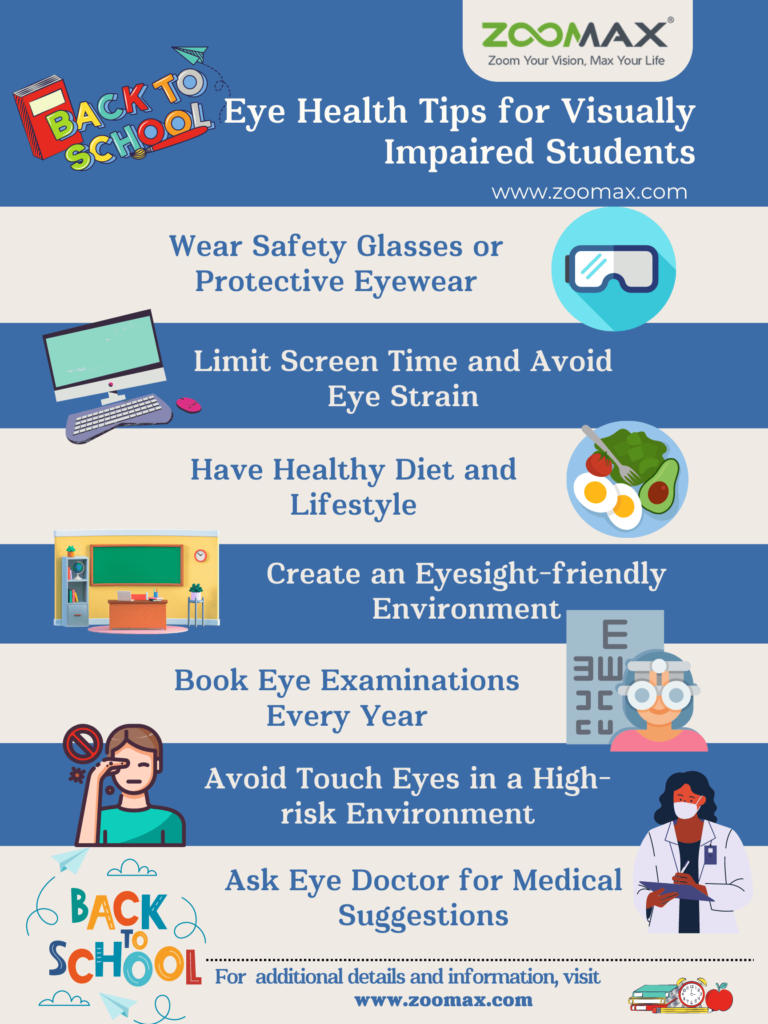A new academic year is set to begin after a wonderful vacation. Yes! Back-to-school season is approaching for all students. Although vision impairments may not limit all activity, they might lead to a certain amount of loss of independence, especially for low vision students who prefer a meaningful school life. Many things may still be done if your kid is experiencing vision loss or the likelihood of becoming blind. Here are seven health tips you may follow to reduce the risk of being visually impaired and help them ease into school life.
Eye Health Tips for Students with Visual Impairment
Wear Safety Glasses or Protective Eyewear
Around 40,000 sports-related eye injuries occur each year in the United States according to Prevent Blindness America. Eye injuries happen too frequently when students participate in indoor or outdoor activities, whether they are normal or visually impaired students. Compared to traditional eyeglasses, safety eyewear or protective eyewear conforms to a higher standard of impact resistance.
For visually impaired students, protective eyewear must be a nice back-to-school gift that can improve their ability to adapt to physical education and sports, as well as help them avoid or lessen the severity of eye injuries. It is also essential to wear safety eyewear while using power tools or equipment at home or on campus. In some cases, for students with vision impairment or color blindness, high-quality electronic video magnifiers are more suited to their needs. Visual aids like Acesight S, wearable E-glasses with a high level of security, are a perfect fit for students who want to participate in more practice activities and offer sufficient protection for students with low vision.

Parents could set an example by wearing protective eyewear yourself, which will encourage your kids to do the same. When you choose safety eyewear as back to school gift for your kid(s), you should know prescription and non-prescription safety glasses are common types of safety eyewear:
- Non-prescription safety eyewear is permanently marked with the manufacturer’s logo, and Z87 (basic impact), or Z87+ (high impact) on the frame.
- Prescription safety glasses must be marked with the manufacturer’s logo and Z87-2.
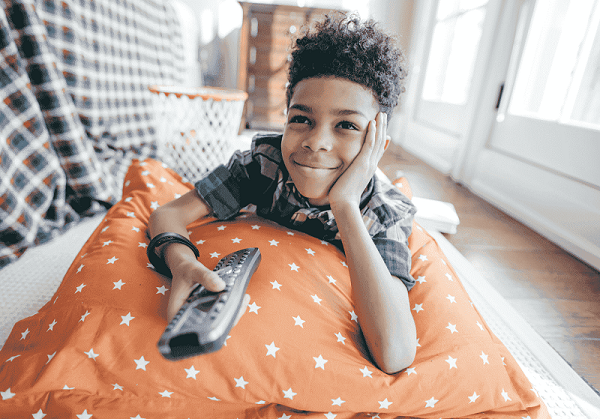
Limit Screen Time and Avoid Eye Strain
Students may continue to experience more screen time at home than ever as the COVID-19 pandemic continues into the third year. Whether it’s the consequence of hours of remote learning or online entertainment, parents should be aware of digital eye strain or computer eye strain. Common symptoms of eye strain include blurred vision, tired eyes, and eye strain headaches. If your kids experience these feelings, please limit screen time for eye strain relief or schedule an appointment with eye doctor for a thorough examination.
 For low vision students, choosing the professional visual aids or video magnifiers for learning is quite important. Some kids may lose track of time while playing games or surfing the Internet, which causes them to spend too much time staring at screens. Professional video magnifiers are designed particularly to help low-vision reading that can minimize additional distractions and ease eye fatigue.
For low vision students, choosing the professional visual aids or video magnifiers for learning is quite important. Some kids may lose track of time while playing games or surfing the Internet, which causes them to spend too much time staring at screens. Professional video magnifiers are designed particularly to help low-vision reading that can minimize additional distractions and ease eye fatigue.
Digital video magnifiers with multiple contrast settings and good navigation functions are excellent choices, and low vision digital magnifiers with a speech output system and OCR function are better. Zoomax series are designed for comfortable reading and learning, among them, Acesight and Snow 12 are excellent study partners for students; Portable video magnifier Luna S enables kids to use when they are at school, traveling to and from school, and at home, helps reduces eye strain and increase reading efficiency as well.
Click here to learn more about Zoomax Back to School Special Offer.
Other useful tips to help visually impaired students prevent eye strain:
-
- Rest Your Eyes Every 20-mins.
- Keep the screens a bit below your line of vision and at a distance of one arm’s length away.
- Adjust the brightness and contrast of the screen to a comfort level.
- Stay hydrated and blink often to prevent dryness and fatigue.
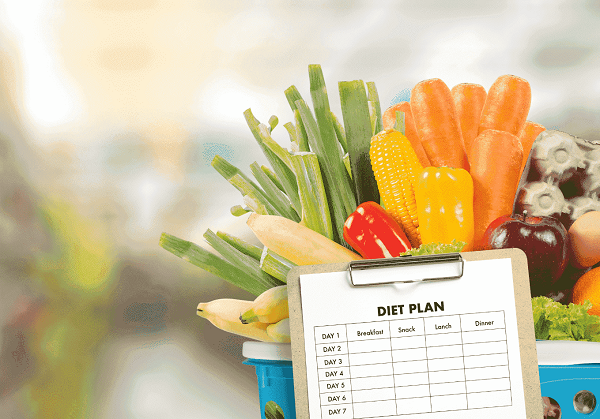
Another aspect of back-to-school preparation is making sure students have a balanced diet of nutrients–a healthier diet and good nutrition are essential to maintaining good vision. Parents should encourage your children to adopt healthy eating and lifestyle habits. Especially for students with visual impairment, higher daily intakes of certain nutrients are necessary.
 To be specific, flaxseed oil and fish oil supplements could lessen the symptoms of dry eyes, eye fatigue, burning, stinging, redness, and sporadic vision problems; antioxidants can lower the risk of cataracts and macular degeneration; vitamin A protects against blindness, while vitamin C may help to prevent or alleviate glaucoma; Omega-3 essential fatty acids could ease dry eye syndrome and protect against macular degeneration.
To be specific, flaxseed oil and fish oil supplements could lessen the symptoms of dry eyes, eye fatigue, burning, stinging, redness, and sporadic vision problems; antioxidants can lower the risk of cataracts and macular degeneration; vitamin A protects against blindness, while vitamin C may help to prevent or alleviate glaucoma; Omega-3 essential fatty acids could ease dry eye syndrome and protect against macular degeneration.
Learn more about Nutrition for Healthy Eyes.
On the other hand, low-vision students can also benefit from moderate exercise. Yard work, riding, swimming, and walking are all examples of moderate exercise and lower eye disease risk to some degree. Wearable video magnifier visual aids, such as Acesight S, Irisvison, etc. can help them continue seeing well enough to play sports and outdoor activities.
Meanwhile, quitting smoking can help people of all ages lower the chance of developing eye diseases that can cause vision impairment or permanent blindness. Of course, if you have a close relative, kid, or student who is visually impaired or at of developing it, please give up smoking immediately.
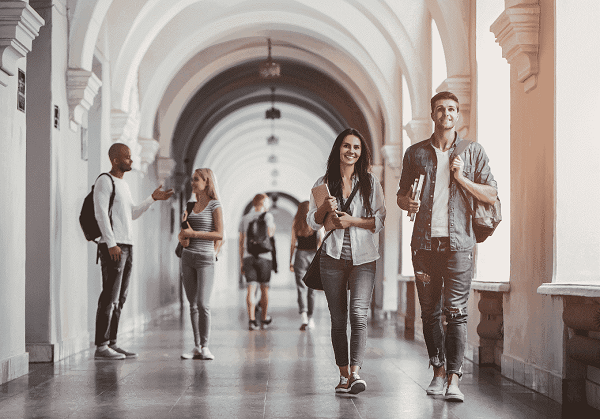
Create an Eyesight-friendly Environment
Having a poor vision does not restrict students from living a meaningful, active, and fulfilling school life. However, it does imply that further precautions should be taken to guarantee the security of the surroundings.
Many organizations and agencies offer low vision services, such as letting low vision specialists visit homes or schools to determine whether any unneeded dangers could raise the possibility of harming low vision students or leaving them with severe vision damage. This is definitely the best preparation for the Back to School season. Parents could ask organizations for assistance to keep children secure at home and school as well.
Some decoration tips:
-
- Avoid partially blocked doorways, dark or otherwise perilous stairwells, and cluttered or poorly placed furnishings that prevent clear pedestrian paths.
- Increasing the quantity and brightness of lamps and overhead lighting for visually impaired students.
- Use LED bulbs to replace poor or harsh illumination. Because LED generates less blue light and creates less glare.
- Read more Prepare Your Home After Visual Impairment Diagnosis
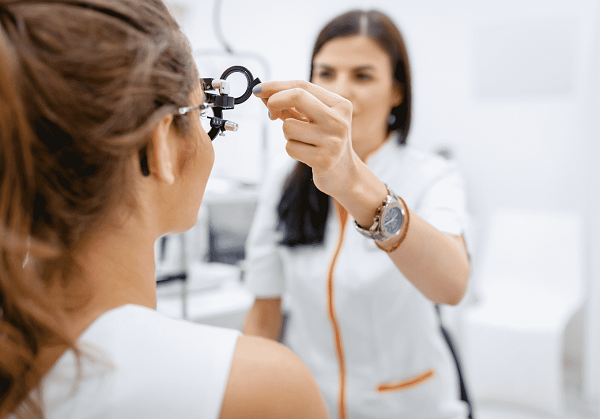
Book Eye Examinations Every Year
Many parents let their kids to take a comprehensive eye exam to make them ready for back to school. A thorough eye exam allows the optometrist to examine and assess the retina’s blood vessels, which are a reliable indicator of the health of blood vessels throughout the body. Many people discover they have serious medical diseases for the first time during a routine eye exam. Of course, it is crucial to get regular eye exams for students to make sure their eyes are healthy and free of vision issues that can impair their academic achievement or jeopardize their safety, especially for students with visual impairment.
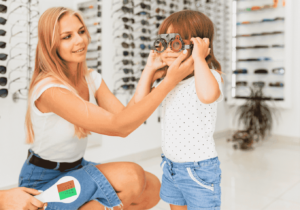 Tips: Parents can give their child an eye exam as a back-to-school gift and take the chance to teach them more in-depth knowledge about eye health. If no vision correction is necessary, school-aged children should get an eye examination at least every two years. Children who wear glasses or contact lenses should have an eye exam every year or follow the eye doctor’s suggestions.
Tips: Parents can give their child an eye exam as a back-to-school gift and take the chance to teach them more in-depth knowledge about eye health. If no vision correction is necessary, school-aged children should get an eye examination at least every two years. Children who wear glasses or contact lenses should have an eye exam every year or follow the eye doctor’s suggestions.
Find Eye Check-up Near Me.
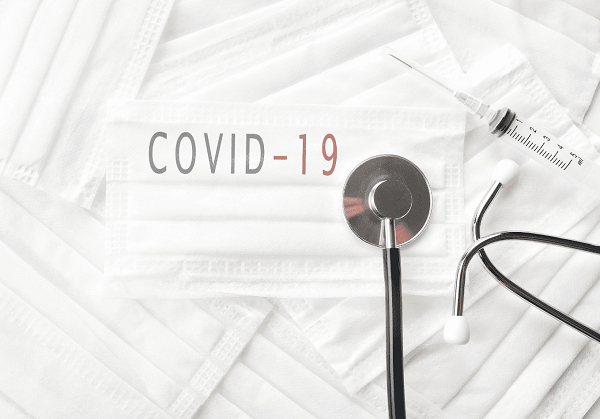
Prevent Visual Impairment during the Post-Pandemic Period
COVID-19 now enters its third year and is far from over. The Omicron variant of SARS-CoV-2 has become the dominant strain globally. According to research published in the journal JAMA Ophthalmology, COVID-19 and its variant Omicron can cause a broad range of ocular symptoms, from diseases of the anterior segment like conjunctivitis (also called pinkeye) and anterior uveitis to those that might impair vision. Common symptoms of conjunctivitis include red, swollen, and itchy (the appearance of these symptoms does not imply that you or your kid has COVID).
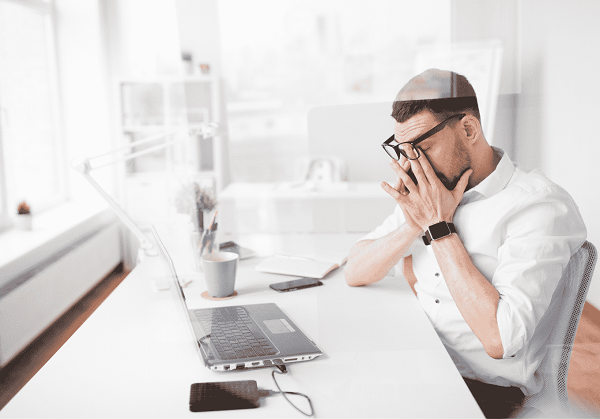
Avoid Touch Eyes in a High-risk Environment
It is never a good idea to poke a germ-ridden finger in your eye, especially during the post-pandemic period. In short, the cornea and sclera are made of collagen that makes up the eye’s support structure. The collagen stretches inward whenever you rub your eye, while re-extends as you release your hands. However, the cornea may weaken and become bent out of shape, which leads to several unfavorable outcomes.
On the other hand, hands often have more bacteria than any other body part, and touching your eyes can lead to hygiene issues, especially in public places or places where there is a risk of contracting the coronavirus.
If your child has been rubbing or touching eyes, please help them correct themselves, especially if they are in a high-risk public setting like a hospital or train station.
Tips: visually impaired students could wear wearable video magnifiers or low vision E-glasses, which reduce the risk of touching eyes with hands. If they must touch their eyes, please tell them to use a tissue instead of fingers.
Ask Eye Doctor for Medical Suggestions
Children will interact with more peers at school than they would on vacation. Thus, it’s crucial to take good self-protection, especially for students with visual impairment. To prevent getting infected with COVID, you can bring your children’s hand sanitizer, wipes, and other disinfectants when they back to school.
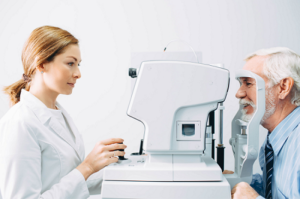 Any of above symptoms in your child? Call an eye doctor and discuss the symptoms before setting up an appointment if your child has eye symptoms that might be associated with COVID. And before visiting a hospital or medical facility, call to find out if it’s safe to do so and to get any arrival instructions. Then follows eye doctors’ medical suggestions.
Any of above symptoms in your child? Call an eye doctor and discuss the symptoms before setting up an appointment if your child has eye symptoms that might be associated with COVID. And before visiting a hospital or medical facility, call to find out if it’s safe to do so and to get any arrival instructions. Then follows eye doctors’ medical suggestions.
Tips: wear a mask if you decide to visit an optometrist doctor during the epidemic. Also be aware that your eye doctor might take additional safety measures, such as monitoring the temperature, and using a special plastic breath barrier when inspecting your eyes.
Back to schools season is approaching – it is a new period for renewal, enthusiasm, and inspiration. As parents, they have the highest expectations for their kids to be healthy, able to study and live independently and have better school experiences. It is one of the parents’ responsibilities to create an encouraging environment for their children and guide them to know knowledge about eye health that will help them throughout their lives.
The following post is a review of the above eye health tips for visually impaired students.
